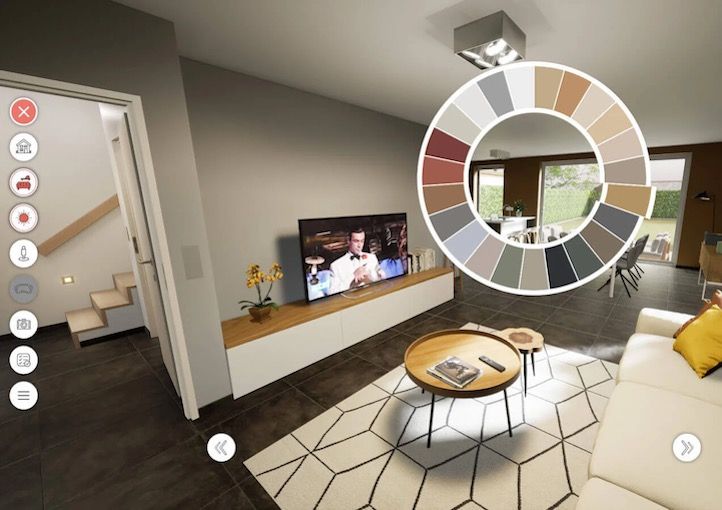7 Considerations When Streaming Your Interactive 3D Product Configurator

3D configurators are everywhere, and they’re putting the “custom” in customer. Whether shopping for shoes, suits, cabinets, or cars, customers can engage in an immersive, fully customizable experience thanks to online product configurators.
As adoption increases, some brands are leaning on a low-tech approach combining photography and a single viewing angle, but the result is a shadow of what it could be. The brands that succeed will be the ones that use real-time rendering and gaming technology such as Unreal Engine or Unity 3D to create fully immersive and photo-realistic interactive experiences that capture customers’ imagination — and attention.
3D configuration has come a long way. Historically, 3D models were stuck at whatever physical workstation handled the configuring, limiting their reach. Now, real-time streaming and cloud rendering solutions, as well as the proliferation of powerful mobile devices and faster networks, created an environment where customers can share product configurations at the speed of light.
Read next: Deploying real-time 3D - WebGL vs cloud rendering
This amplified impact has incentivized businesses to compete to create the most impressive and immersive customer experiences.
Online configuration is particularly prevalent in the automotive industry — Chevy’s Corvette Visualizer, created in Unreal Engine, saw 1.3 million users and more than 940,000 custom configurations in the first month alone. But the impact of 3D product configurations goes far beyond the automotive industry.
In architecture and real estate, potential homebuyers can tour a photoreal 3D property and configure a pre-built home or condo, allowing them to see a space and how specific appliances, cabinets, or countertops would look in ultra-realistic detail.
As interactive 3D product configuration becomes increasingly widespread, the bar is being continuously raised. To make sure your own 3D configuration experience is a shining success, you'll need to deliver in these crucial areas:
1. Knock customers' socks off
A 3D configurator should offer a wow factor that blows customers away. And a huge part of that is offering all the important configurable options, plus a few surprises that customers might not have even realized were possible. The key is to make each configuration highly detailed and as photo-realistic as possible so the buyer is fully aware of how one small change can affect the overall end product — for better or worse.
Game engines like Unity and Unreal Engine accomplish this by turning CAD models into photo-realistic 3D renderings in such incredible detail that customers really get a feel for the products, like they could reach out and touch them.
These engines power some of the most popular video games in the world, and they offer the chance to create a truly memorable interactive brand experience for customers. And these fully immersive 3D experiences are being delivered through extended reality platforms (VR/AR), as well as being made more accessible now through web browsers and mobile devices.
2. Don’t overwhelm your customers
Too many options can confuse a customer. And when a 3D configuration is too much like a game, customers can lose sight of a purchase. The best product configurators enable enough customization for customers to make the product their own without requiring them to spend hours building it from scratch or getting lost in an experience that detracts from the core shopping experience.
3. Liberate customers from a limited viewing angle
3D configurators based on 2D images lack the immersive quality that lets users interact freely with a product. Selling a car? Let customers explore the interior, pop the trunk, and listen to their favorite radio station through the speakers. Selling a house? Instead of posting snapshots that homebuyers have to piece together in their mind with the help of a static blueprint image, let them walk through the entire space and explore from every angle. You can imagine the possibilities.
4. Make your configurator for the masses
Even the best 3D configurator is essentially useless if it can only be used by the small segment of the population that has powerful gaming computers at home. Today’s audiences want access from any device, at any time, and from any place. That requires a cloud streaming solution that’s scalable, cost-effective, and high-performance.
PureWeb offers enterprise-ready cloud streaming with built-in Unreal Engine and Unity plug-ins — not to mention deep expertise in cloud streaming setup, management, and ongoing optimizations based on usage patterns.
5. Activate real-time interactivity and collaboration
Business-to-business product configurations demand collaboration. Streaming your 3D configuration into a shared meeting space means retailers can communicate with potential buyers as the latter are configuring their dream product. This feature is particularly useful in manufacturing, where purchases might have many options and a hefty price tag.
Related read: What is real-time 3D (and why the future of digital depends on it)
Even in business-to-consumer applications, like buying cars or homes, product configurators can make it easy for users to livestream their real-time configuration as it's being customized and share it with family and friends to get instant feedback. Plus, in home construction, real estate agents or builders that utilize 3D configurators can communicate with potential homebuyers in real time as the prospects tour the home via PureWeb's interactive streaming and live collaboration platform.
6. Market effectively to maximize engagement
To maximize the return on investment generated by your configurator, establish a digital marketing plan well in advance. Drive traffic from your most effective online channels, feature the configurator prominently on your website, and make access as easy as possible. Consider increasing your cost per click on Google or via social media ads, taking into account the higher engagement rates and conversions garnered by an interactive 3D configurator.
7. Make it shareable
Social optimization has the power to amplify your configurator’s reach exponentially. With built-in tools that allow users to capture and share beauty shots of their creations, your users become your ambassadors and spread the word. You can also capture data on the most popular product configurations and use that information to inform your company’s future marketing and inventory management efforts.
3D product configuration is already an important marketing, sales, and lead generation tool, but it's only becoming more powerful as implementation opportunities expand to new industries, including real estate and manufacturing. 3D configurators created with game engines like Unreal can also be complex, so make sure you have a plan to maximize awareness and online engagement. Before you plan your budget for content creation and/or scalable cloud streaming, weigh the above considerations carefully, and don’t hesitate to reach out to the pros.
Contact us here to learn more about PureWeb Reality and to request a demo of our interactive 3D streaming platform for real-time 3D product configurators.


